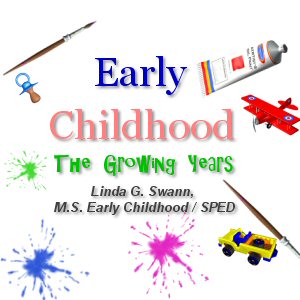Language Development
 With predictable child development in the six domains, gross motor, fine motor, cognitive, language, self help/adaptive, and social/emotional, we made the connections starting with gross motor, then fine motor and cognitive development. The next area of development to blossom is language or communication..
With predictable child development in the six domains, gross motor, fine motor, cognitive, language, self help/adaptive, and social/emotional, we made the connections starting with gross motor, then fine motor and cognitive development. The next area of development to blossom is language or communication..
As we know, infants communicate their wants and needs long before language appears. They cry, and we respond. We learn to “read” our child’s body language, and anticipate their wants and needs, long before they cry. Astonishingly, a mother can tell when her child is “getting sick” by simply observing his/her actions. These skills seem to be innate and are part of the bonding that takes place between mother and child.
While communication begins in infancy, actual spoken language is much slower to develop. We know that “motherese” is the earliest tool used for language development. Communication involves language, the use of words, and articulation, the production of sound. Articulation is first to develop. Your child produces a random sound, which is actually one sound repeated, over and over again. We repeat the sound, and with repetition and “practice” new sounds follow. All languages follow the same process. In English, the first sounds are vowel sounds (a, e, i, o, u). You can “jump start” your child’s language by using these sounds in a playful manner. Use large, exaggerated lip movements for your child to imitate. After conquering vowel sounds, consonants appear (b, d). It is not a coincidence that your child says dada before mama. The shape of the mouth muscles dictates which sound is easiest for a child to make. Children who take bottles longer than necessary, are slower to talk, due in part to the way the mouth is shaped while sucking. Drinking from a cup and finger feeding at age appropriate times, is important for development of articulation skills.
With articulation developed, vowels and most of the consonants are randomly “babbled”. This is followed by a pattern of babbling that sounds very much like language, with stops and starts, and called “jabbering”, as it imitates adult communication patterns. Single words are followed by two word phrases. A child must have fifty words in his/her receptive (knows the meaning) vocabulary before an attempt to speak occurs (expressive vocabulary). Often, we repeat a word over and over again in hopes our child will say it. But, the child must “own” the word to repeat it (know, without a doubt, the meaning of it). One of the first words a child says is “ball”. It is an easy word, because the child can see the ball, touch the ball and use the ball. He/she owns it, thus the word, “ball” is uttered.
Helping your child develop language skills is an easy task if you follow the process of language development. Help your child “own” words by using all the senses, touching, hearing, seeing, tasting, and smelling. For example, the word hair can be taught by saying the word while touching your hair. Let your child smell your hair, touch your hair and if so desired, mouth your hair. Do this with various models, a baby doll, daddy, brother, sister, his/her own hair. Most words can be taught in this way. Complex words with blends will come later, so keep it simple. Also, start with one syllable words, then two syllable, and so on. And do not forget … talk, talk, talk to your child!
Next week: Activities to help exercise the muscles of the mouth to increase articulation skills.












